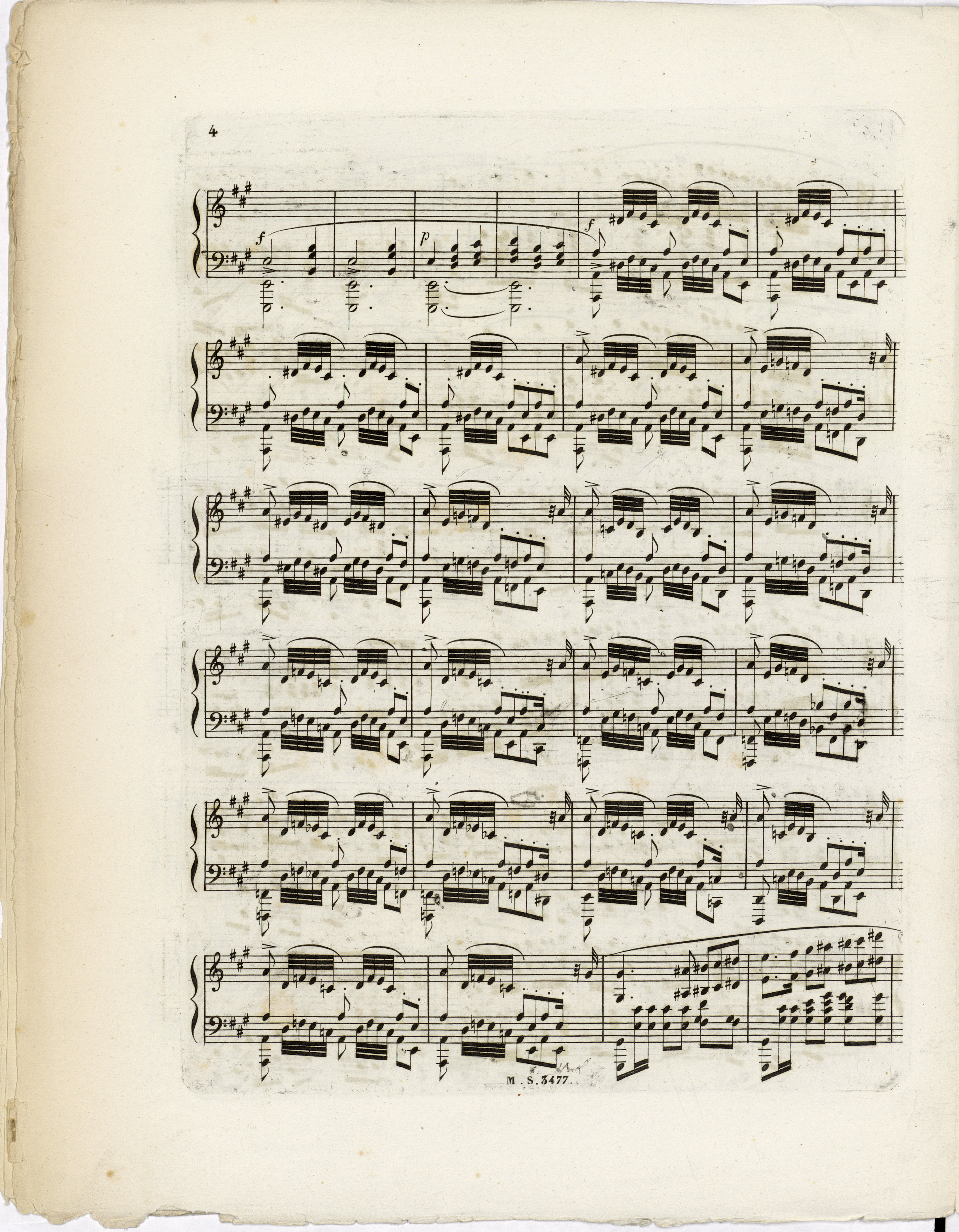



In the entire section tempo di Mazourka, the two-bar accompaniment figure with a characteristic shape resembling a wave appears 8 times (b. 127-130, 147-150, 186-189 and 206-209). Sometimes, it is provided with phrase marks and staccato or portato dots (their meaning depends on whether they are accompanied by a phrase mark or not) from the 2nd to the 6th crotchets, in four combinations (we omit here minor, accidental inaccuracies, e.g. absence of certain dots or the range of phrase marks (from the 1st or the 2nd crotchet)):
- no indications in b. 149-150, 186-189 and 206-207 in all sources; moreover, in GE in the remaining bars except b. 129-130;
- staccato dots in b. 129-130; moreover, in EE in b. 147-148;
- phrase marks in b. 208-209 in FE (→EE);
- phrase marks and portato dots in FE (→EE) in b. 127-128 and in FE in b. 147-148.
According to us, it is the indications of FE in b. 127-128 and 147-148 that are reliable – placed in the first figure of the first two out of those four sections, they are definitely meant to be a model for the remaining figures. At the same time, they offer the most accurate description of performance by defining the articulation and by emphasising the shape of accompaniment, atypical of the mazurka. The fact that the indications are almost completely absent in GE suggests that Chopin introduced them into the basis for FE or while proofreading FE1 (perhaps first dots and then phrase marks). Incomplete indications – dots only or phrase marks only – are most probably a consequence of inaccuracies of Chopin or the copyist (or of the engravers).
Taking into account the above observations, in the main text we give the markings of FE wherever they are complete; in the remaining bars we suggest adding the missing elements.
In the entire middle section, tempo di Mazourka, this characteristic two-bar motif of an ascending and descending structure appears 8 times in the accompaniment (b. 127-130, 147-150, 186-189 and 206-209). In GE it is never provided with a phrase mark. Chopin started adding phrase marks in these bars while proofreading FE (probably) (in FE (→EE) one can see three phrase marks – in b. 127-128, 147-148 and 208-209); however, it is clear that he did not manage to standardise them (or he could not, whatever the reason). In the main text we give the phrase marks of FE; in the remaining places we suggest them in square brackets (as we do in the case of the staccato dots, which we discuss in the adjacent note).
Compare the passage in the sources »
category imprint: Differences between sources; Editorial revisions
issues: Authentic corrections of FE
notation: Slurs


